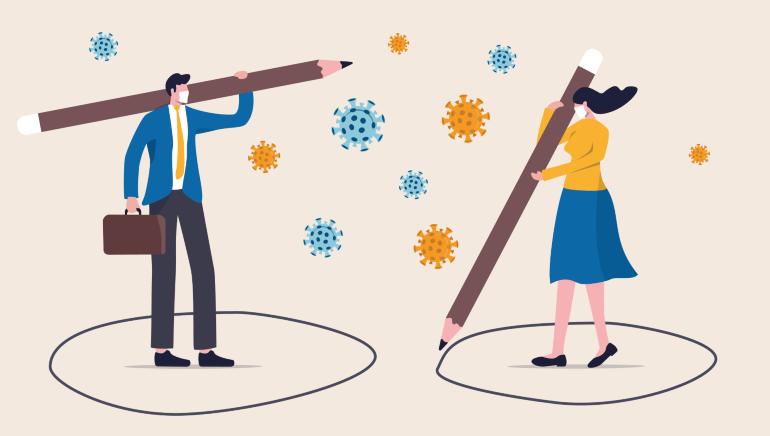We have all been accustomed to social distancing as the new ‘temporary’ normal to fight off covid-19 effectively. However, it seems like the temporary normal state might have to be practiced for longer to shun any possibility of an individual contracting coronavirus.
A study done by the Harvard School of Public Health claims that The United States may need to endure social distancing measures adopted during the coronavirus outbreak until 2022. And while study just talks about the US, given the rising cases of covid-19 all over the world, this may also stand true for India.
Why does social distancing seem like an effective preventative measure?“ Intermittent distancing may be required into 2022 unless critical care capacity is increased substantially or treatment or vaccine becomes available”, the Harvard researchers said in findings published in the journal Science.

Giving examples of South Korea and Singapore, the researchers wrote that effective distancing could reduce the strain on healthcare systems and enable contact tracing and quarantine to be feasible.
Social distancing: Both a boon and a bane
Social distancing has been effective in preventing mass outbreak of the virus. In fact, in many cases it has successfully curbed the rapid spread of covid-19. Although it safeguards our health, it also negatively impacts other area of our life–not to mention the economy.
The Harvard study acknowledged that prolonged distancing would most likely have profoundly negative economic, social, and educational consequences.
Also read: Paper towels may remove virus missed by poor hand washing
The fight against coronavirus isn’t going to be brief The study added that even in the case of “apparent elimination”, SARS-CoV-2 surveillance should still be maintained, as a resurgence in contagion may be possible as late as 2024.
The World Health Organization (WHO) has warned that infections had “certainly” not yet peaked. Nearly 2 million people globally have been infected and more than 124,000 have died in the most serious pandemic in a century. The epicenter has shifted from China, where the virus emerged in December, to the United States, which has now recorded the most deaths.
Even though it might seem like the strains of coronavirus can be completely eradicated within one duration of lockdown, the nature of the virus seems to showcase seasonal occurrence according to the study. To curb that the spread of coronavirus completely, researchers claim that we might practice social distancing longer by ensuring herd immunity.
So even though we all might miss the casual handshakes or hugs, it seems like we might have bid temporary adieu to it for longer. Afterall ensuring health must be our first priority no matter the social cost it might take. The seasonal nature of the pandemic shall require us to be continually vigilant for a long time.


